
Dr Andrew Minson is the Global Cement and Concrete Association (GCCA) Director of Concrete and Sustainable Construction. He talks to Guy Woodford about his role at the heart of the global cement and concrete industry's ambitious journey to net zero concrete.
The collective willingness of the world's major concrete and cement sector players to deliver net zero concrete by 2050 is a powerful driver of Dr Andrew Minson's work.
"There are so many advantages when companies work together, which happens in all fields when competitors have common interests. The common interest for the cement and concrete sector is to decarbonise. Twenty years ago, we might have sat across a table from a government representative, architect, or engineer. Now we're all on the same side of the table, and the discussions are about 'how we're going to do it' rather than 'whether we need to do it'."
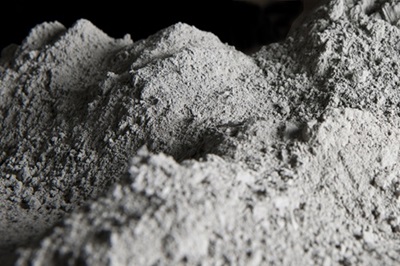
Based in Oxfordshire, England, Minson, an Australian national from Brisbane, joined the GCCA in September 2018 after many years as executive director of The Concrete Centre – part of the MPA (Mineral Products Association).
"I was a structural engineer based in London for ten years, working on real projects in different parts of the world. I arrived at the Concrete Centre in 2004, as it was beginning, and part of my role was building a team of engineers that could communicate back to [project] engineers how to use building materials most efficiently and effectively.
"Then, in 2006, there was a bit of a watershed moment in sustainability, with politicians trying to 'out green' themselves by riding bicycles, which was an indicator that they were following public opinion. There was a big David Attenborough documentary, and Al Gore released his film, An Inconvenient Truth, so we pivoted more at The Concrete Centre to do far more on sustainability. I noticed some engineering design companies went from having specialist sustainable building groups to having sustainability as a key feature of all their work. While I missed being involved in real projects, I enjoyed even more playing a small part in trying to shape the environment in which the design and construction community worked."

Headquartered in Paddington, central London, the GCCA is dedicated to developing and strengthening the sector's contribution to sustainable construction. With its members accounting for 80% of cement production capacity outside of China, the 2018-launched Association aims to foster innovation throughout the construction value chain in collaboration with industry associations, architects, engineers and innovators. In this way, the GCCA demonstrates how concrete solutions can meet global construction challenges and sustainable development goals while showcasing responsible industrial leadership in manufacturing and using cement and concrete. The GCCA complements and supports the work done by associations at the national and regional levels.
Around 4.2 billion tonnes of cement are produced worldwide annually, and the material is responsible for 7% of yearly global CO₂ emissions. The world's annual cement production is used to help make around 14 billion cubic metres of concrete a year. Minson stresses the vitality of understanding concrete's "critical nature".
"If it isn't understood, the efforts of all the stakeholders to decarobinise production and use the material more efficiently won't be made," he says. "It will create an assumption that alternative materials or some magic solution might come over the horizon. The reality is that the scale and cost-effectiveness of concrete and its versatility to be used in such a broad range of applications means it's here to stay. We have a pathway to decarbonise it, and we must get on with that."
The pathway Minson is referring to is the GCCA 2050 Net Zero Roadmap. In 2020, association member companies came together as sector leaders to commit to producing carbon-neutral concrete by 2050, in line with global climate targets – accelerating the CO2 reductions already achieved. The GCCA 2050 Net Zero Roadmap describes how, collectively, in collaboration with built environment stakeholders and policymakers, the global cement and concrete industry can be fully decarbonised, ensuring net zero concrete for the world.
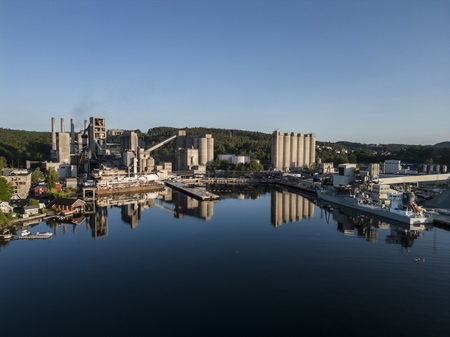
"Creating the Roadmap was an 18-month process involving over 100 experts from our membership and beyond, initially part of five task groups and then a second phase of nine task groups. Ultimately, the [Roadmap] commitment was by CEOs. All the CEOs took the process very seriously. The last six months leading up to the agreed Roadmap were slow and quite hard going as they did look at every detail of it. It's not a document that will sit on a shelf or another study of how net zero concrete could be done. It is a commitment to how it will be done."
The GCCA also coordinates the Net Zero Accelerator Initiative. "This takes the global 2050 Net Zero Roadmap and uses it as a catalyst to support national cement and concrete industries and their associations in creating national roadmaps to help move towards the global net zero concrete goal," explains Minson. "One of the dynamics we see is leading GCCA member companies operating in countries driving national net zero roadmaps as they want to have a level playing field. This raises the bar for a country's producers to make the changes required to deliver sustainable products and for national governments to set policies allowing their domestic cement and concrete companies to deliver on decarbonisation. These national governments report to the IPCC (Intergovernmental Panel on Climate Change), so helping their cement and concrete industry decarbonise helps them meet their wider decarbonisation goals."
A GCCA Green Cement Technology Tracker aims to support decision-makers and experts in policy, industry, academia, and civil society by tracking public announcements of investments in low-carbon cement technologies and presenting them transparently in one place.
The tracker currently includes carbon capture technologies and clay calcination kiln units. Carbon Capture and Storage (CCS) and Carbon Capture, Utilisation and Storage (CCUS) account for 36% of planned emission reduction levers in the GCCA 2050 Net Zero Roadmap for concrete. Cement and binder savings, including calcined clays, account for 11% of planned emission reduction levers in the same roadmap.
The GCCA 2050 Net Zero Roadmap includes 2030 interim targets. "By 2030, compared to 2020, the Roadmap aims for a 20% reduction in CO₂ per tonne of cement and a 25% CO₂ reduction per concrete unit," explains Minson. Ten CCUS cement plants are also earmarked to operate at an industrial scale by 2030. Heidelberg Materials' CCUS cement plant in Brevik, Norway, will become operational later this year, capturing up to 95% of the plant's CO₂ emissions. The same company's Edmonton CCUS cement plant in Edmonton, Alberta, Canada, is scheduled to be operational by late 2026 and capture more than 1 million tonnes of CO₂ annually.
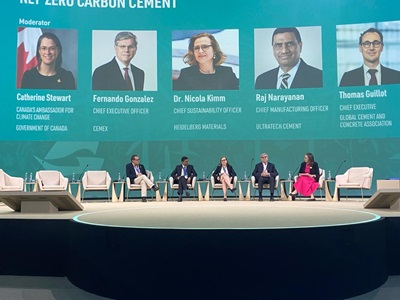
"Whereas 15 years ago, there may have been suspicion about CCUS, in the last five years, the process has taken great strides," notes Minson. "We see recognition and support at the governmental level through European Commission funding and the United States' IRA [Inflation Reduction Act's tax credit for carbon capture and sequestration] programme.
"In the CCUS story, there has been a separation of what hard-to-abate [emissions] industrial sectors, like cement and concrete, require from it, as opposed to the fossil fuels industry. There was a suspicion in the past that any conversation about CCUS was really about a mechanism for the fossil fuels industry to keep pumping out fossil fuels, but this is no longer the case.
"There is a [financial] cost to carbon capture. In the developed world, that [financial] cost will be quite small at the scale of the final project; per tonne of cement, there will be a bigger percentage increase. But cement goes into concrete; concrete construction is only a subset of a whole project. So, for a school or hospital, for example, built with net zero cement, the incremental [financial] cost to that final project will only be a single-digit percentage. It's a good story for the school, hospital and builder to tell as part of the effort to combat climate change."
Minson emphasises how the high-profile annual COP (Conference of the Parties) summits allow the GCCA to interact with the global community addressing climate action while reinforcing GCCA members' work towards delivering carbon-neutral concrete.
The Cement and Concrete Breakthrough Initiative launched at COP28 (30 Nov–13 Dec 2023) in Dubai, UAE, co-led by Canada and the UAE and supported by the GCCA, is part of a broader industrial breakthrough initiative, including steel, launched at COP26 in Glasgow in 2021. It will enable countries to share best practices on various policies and other measures to help the cement and concrete industry decarbonise. The initiative also commits to working with countries, businesses and other organisations to accelerate investments in the technologies, tools and policies needed to help the industry achieve net zero by 2050.
"For cement to have its own breakthrough initiative is a huge recognition of the cement industry and the role governments can play in enabling it to decarbonise. It's hugely positive," says Minson. "In the last three years, we've raised the profile of cement and concrete significantly. The scale of involvement we had in Dubai was far higher than in Egypt [Sharm El-Sheikh] when the buildings element of the breakthrough initiative was launched, and that GCCA involvement was far higher than the previous year in Glasgow."
China is by far the world's biggest national producer and user of cement, producing 2.1 billion tonnes a year, half the global total. India is a very distant second, producing around 410 million tonnes annually. Minson reiterates that several big Chinese cement producers are part of the GCCA, and 80% of India's cement companies are GCCA members signed up to the GCCA 2050 Net Zero Roadmap.
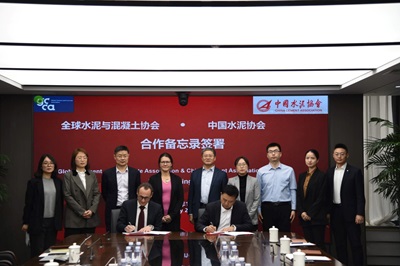
In January 2024, the China Cement Association (CCA) and the GCCA signed a milestone MoU (memorandum of understanding) agreement to help accelerate the sector's decarbonisation worldwide.
"We are delighted with this MoU and will work with the CCA to deliver a China cement industry roadmap similar to that used in India and the rest of the world to achieve decarbonisation. This means that the roadmaps are consistent and comprehensive across geographies.
"Getting China on board is also significant in a wider context, as the country is a significant manufacturer of cement and concrete machinery and plants and a big contributor to the industry sustainability research agenda. China is also a major player in developing and commercialising carbon capture solutions."
Minson says that in its communications about the GCCA 2050 Net Zero Roadmap, the association is careful not to appear to be "laying responsibility on someone else" in the supply chain, emphasising that the whole supply chain works within a "policy environment".
"Producers worldwide are committed to doing what they can do in the production process to deliver net zero concrete and are highlighting the role that others further down the supply chain can take.
"Policymakers have a role throughout this: from helping to create infrastructure for CCUS to delivering more renewable electrical energy, which is particularly important as there will be more electrical consumption with CCUS. Governments must also play their role in promoting green public procurement. Governments and their agencies are responsible for purchasing 30, 40 or, in some countries, 50% of cement and concrete. Therefore, they have a role in how they procure it.
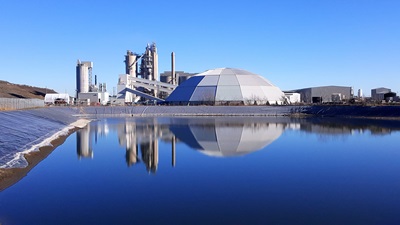
"One of our big messages is that using supplementary cementitious material from other industries' waste, like fly ash and GGBS (ground granulated blast-furnace slag), should be allowed in government procurement. Some governments still do not allow this in their cement and concrete specifications and client briefs for projects. In time, as some of these supplementary cementitious materials become less available in some countries, calcined clay will be the large-scale supplementary cementitious material. It can deliver the cement content required and the final concrete building at a lower CO₂ footprint."
Minson says that "assuming efficiencies in design", the GCCA forecasts that concrete demand volume through to 2050 will be pretty much the same as now. "If those design efficiencies are not implemented, there will probably be a 25% demand increase due to the sheer need for housing and other infrastructure. However, our 2050 Net Zero Roadmap forecasts that as building designers and the construction community recognise and implement efficient design techniques that address the carbon challenge, they can use this versatile material and its inherent properties to get a 20-25% efficiency saving."
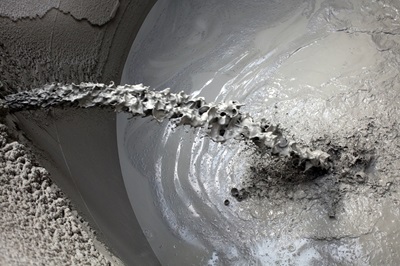
Asked about the biggest challenges he faces in his GCCA executive director role and his longstanding passion for improving all aspects of the built environment, Minson, an Oxford and Queensland University alumnus, responds: "The sheer scale of what we are working towards is a key challenge, and you overcome that through collaboration. We have to collaborate right down through the value chain.
"I wanted to get involved in engineering and doing things I could see that were tangible and made a difference. Ironically, while cement and concrete are visible, the key to achieving net zero concrete is reducing the emissions of CO₂, which are completely invisible."













